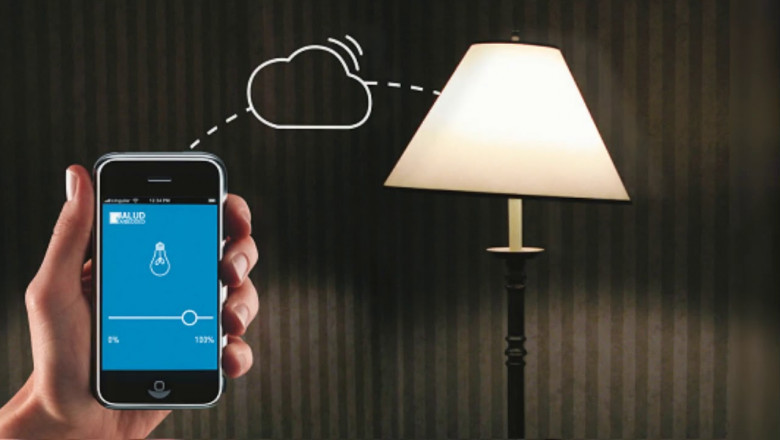views
Rise of the Smart Systems
The development and adoption of intelligent lighting control systems is rapidly changing the way buildings are lit. These smart systems utilize sensors, networking, and data analytics to automatically adjust lighting based on conditions like occupancy, daylight levels, and schedules. Through intelligent strategies like occupancy sensing, daylight harvesting, and personalized lighting settings, smart controls are able to significantly reduce energy consumption compared to conventional switches and fixtures. The superior energy efficiency of these systems is driving their increased use across many commercial, industrial, and institutional applications. Major organizations are recognizing the financial and environmental benefits of switching to intelligent lighting solutions.
Occupancy Sensing for Savings
One of the most common types of Intelligent Lighting Controls are occupancy sensors. These sensors detect when a space is occupied and dim or turn off the lights when the area is vacant. Traditional on/off switches keep lights on even when no one is present, wasting huge amounts of electricity overtime. Occupancy sensors help address this inefficiency by automatically adjusting the lighting state based on real-time occupancy data. Studies have found that occupancy sensing can reduce lighting energy use by 30-50% on average by preventing phantom load from empty spaces. The significant savings potential makes occupancy sensors an appealing option for many building types looking to cut costs and carbon footprint through more efficient lighting practices.
Harvesting Daylight Where Possible
Another intelligent lighting strategy is daylight harvesting, which utilizes photosensors to measure ambient light levels and automatically dim electric lights when there is plenty of natural illumination coming through windows. By leveraging natural light close to the window before switching on artificial sources, daylight harvesting can reduce lighting energy consumption dramatically. Installing shade controls alongside the sensors allows users to fine-tune the threshold at which lights dim based on conditions. Properly deployed daylight harvesting approaches frequently save 40-70% on lighting compared to a space without smart daylight controls. The financial and environmental benefits have led many commercial building owners to adopt this technology, especially for perimeter zones near windows.
Personalization for Productivity and Comfort
Advanced intelligent lighting systems now offer personalized control interfaces that empower individual users and groups. Lighting settings can be customized for various tasks, moods, and wellness needs. Dimming levels, color temperatures, and zones can all be tailored through software. This breeds higher user satisfaction and allows optimization for visual comfort and workplace productivity. Personalization features are becoming more popular in office environments seeking to improve employee experience through dynamic, user-centric lighting that supports various functions and individual preferences throughout the day. The ability for staff to self-adjust lighting as desired through intuitive interfaces enhances focus and reduces eye strain compared to one-size-fits-all solutions.
Analytics for Continuous Optimization
Perhaps the most promising development in intelligent lighting is the new wave of data-driven systems that leverage analytics platforms and smart sensors. These solutions go beyond basic on/off or dimming controls by continuously monitoring patterns in lighting usage to discern opportunities for improvement. Mining signals from occupancy, photodiode, contactor, and Internet of Things (IoT) sensors, analytics engines uncover how space is actually being occupied and lit versus theoretical schedules. Advanced algorithms then autonomously tweak settings and sequences to maximize energy savings while maintaining visual comfort. By adjusting in real-time based on behavioral analytics, these self-optimizing systems can deliver energy reductions far superior to static configurations set during installation. As buildings and campuses connect more lighting assets to centralized analytics platforms, the potential for continuous performance enhancements is immense.
Expanded Applications and Deployments
Bolstered by their demonstrable savings and features enabling fine-tuned control, intelligent lighting products are gaining traction across a variety of commercial market segments and building types. Office spaces are a prime early adopter due to potential return on investment appealing to managers focused on operational expenses. However, intelligent controls also make strong financial cases in other spaces with heavy lighting loads like warehouses, schools, universities, retail stores, healthcare facilities, and public venues. Manufacturers now offer a plethora of networked lighting control solutions designed for nearly any indoor application. Major institutional owners and developers are incorporating intelligent technology into new construction as an integral part of sustainable design from inception. Meanwhile, retrofit upgrades provide benefits to existing structures looking to modernize their illumination in a more energy-conscientious manner. Demand is truly taking off as capabilities expand and ROI timeframes continue to shrink, pointing to intelligent lighting as a foundational piece of high performance, low carbon buildings going forward.
Get this Report in Japanese Language:
Get this Report in Korean Language:
About Author:
Money Singh is a seasoned content writer with over four years of experience in the market research sector. Her expertise spans various industries, including food and beverages, biotechnology, chemical and materials, defense and aerospace, consumer goods, etc. (https://www.linkedin.com/in/money-singh-590844163)






















Comments
0 comment